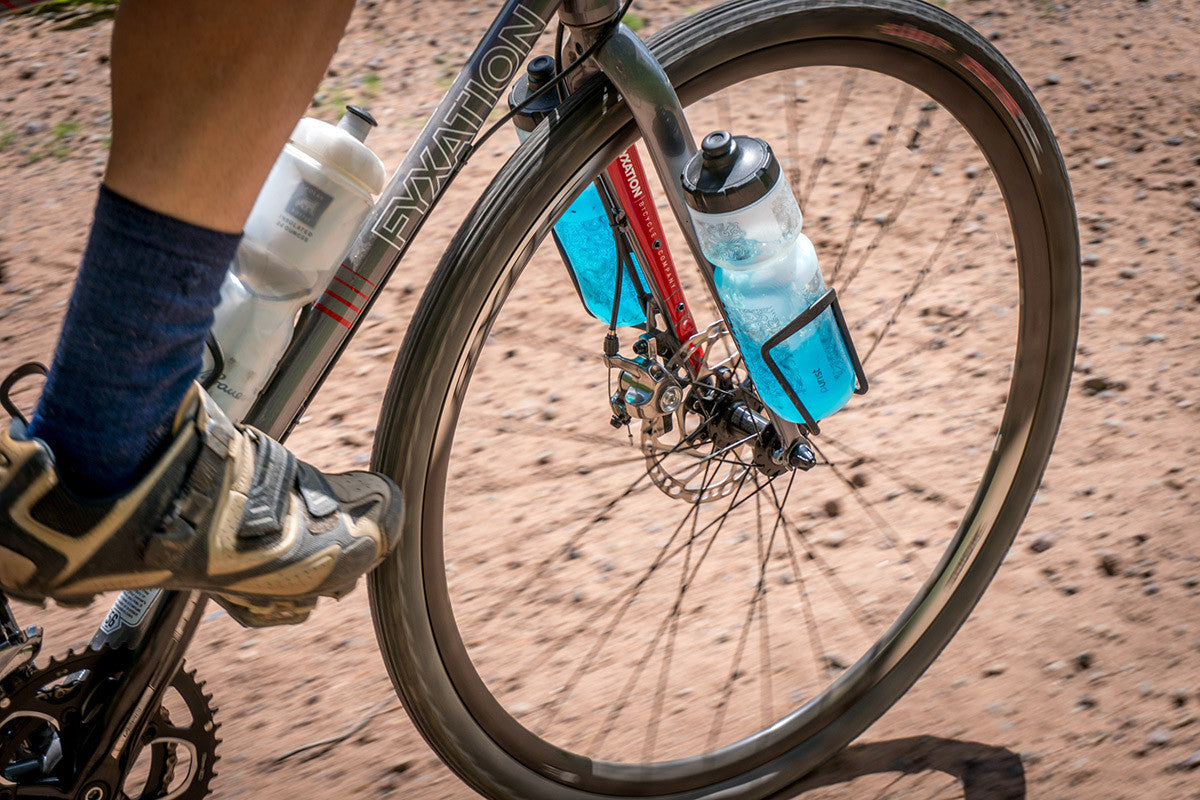Fyxation Tech: Bicycle Disc Brake Maintenance


Over the past year I have seen more disc brakes come through my stand than ever before. With the industry shifting towards disc brakes on all types of bikes, I think we will only see more and more here in our service area. There are many positive attributes to disc brakes; increased modulation, more consistent braking in varying conditions and longer rim life to name a few. With that said, we wanted to share our knowledge and talk about some maintenance and setup tips specific to disc brakes.
Initial Setup And Bed In Process
With every new disc brake system it's important to perform a bed in process. This is also sometimes called burnishing or burning in the pads. New disc brake pads have a thin smooth layer that must be removed before they will work well. The way a disc brake works is that the actual pad material is imparted into the metal rotor giving the brake pad more grip. An uneven or glazed surface will cause noise and inconsistent braking power. The bed in process will help to prevent such noise and improve performance. There are varying techniques to doing this and you should always check with the manufacturer's recommended bed in process but I will give you a pretty standard one that I use here at the shop. Perform the following steps one brake at a time so that you can feel each brake more consistently and you should be good to go.

First, ride in an easy gear and get up to somewhere around 10 mph, slow down to walking speed approximately 3 mph as fast as possible without skidding or locking up the brake. Do this 15 times on each brake. Next take it up a notch and ride somewhere around 15-20 mph. Again slow down to around jogging speed, about 5 mph, as quickly as possible without skidding or locking up the brake. Do this 15 times on each brake and you'll be all set. You should notice that throughout the process you'll have improved braking power.
Continued Maintenance, Adjustments, Bleeding, And When To Replace Pads And Rotors
As with every wearable part on your bike like your tires, chain, cassette, etc., you should check your brake pads for wear during regular maintenance. Disc brakes can be very sensitive to contamination so while lubing your chain or cleaning your bike try to steer clear of the rotors and pads. Never use aerosol lubricants or de-greasers/cleaners near your rotors or pads because this can damage the pads or leave contaminants on the pads. Only clean your rotors with fresh Isopropyl Alcohol and a clean paper towel.

If you have mechanical disc brakes typically only one brake pad will move which means you will have to physically dial in the one that is fixed and adjust cable tension as the pads wear. Also keep an eye on the housing, look for any worn parts that may rub on the frame or become damaged.
With hydraulic brakes pistons on each side of the brake actuate the pads at the same rate so they will wear equally and adjust to wear automatically just like a car or motorcycle. Keep an eye on your hoses and watch for damage as well.

Once the pad material wears down to about the thickness of a nickel or 1-2 mm it is time to replace. If you switch pad materials make sure to clean your rotors thoroughly with Isopropyl Alcohol. Typically you can replace your brake pads two to three times before replacing your rotors, but replacing them at the same time ensures that you are starting fresh and can prevent noise or poor braking performance.
No hydraulic disc brake system is completely air or water tight. Water and air can work its way into your brake system causing a spongy lever feel, brake fade, or even catastrophic brake failure. Having your brakes bled once a year will lengthen the lifespan of your braking system, prevent from possible failures, and maximize braking performance. When done regularly it is a simple procedure that can be done at home with the right equipment and knowledge. If you lack one or both of these bring your bike in to your local shop where they will be happy to assist you.

With the increasing number of bikes using disc brakes on the road and on the trail my aim was to help familiarize you with basic maintenance and hopefully make disc brakes less frightening or foreign. Hopefully now you have the knowledge to care for your disc brakes so that you can get the best performance out of them and enjoy your ride more.
Words: Lead Tech - Steve Mehne
Steve was our first employee here at our shop in Milwaukee and is a member of our service and sales team. He has been an avid cyclist his entire life and took up an interest in mechanics in high school while working for a small locally owned bike shop. It wasn't until 2012 that he became a full time mechanic and has been turning wrenches ever since. His interests other than bikes include coffee, camping, and the occasional fermented beverage.
Photos: Dave Schlabowski & Tim Reddington



Leave a comment